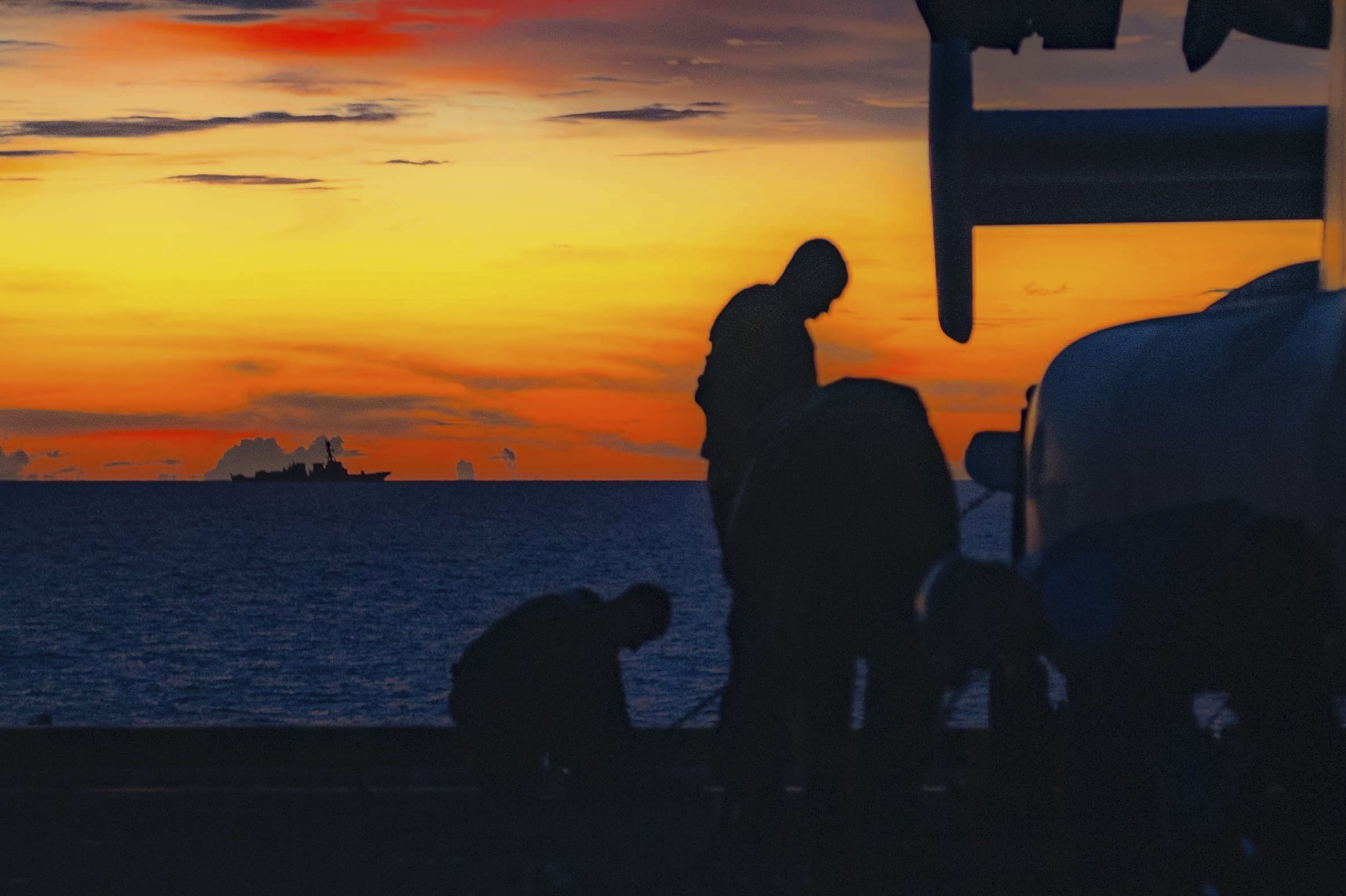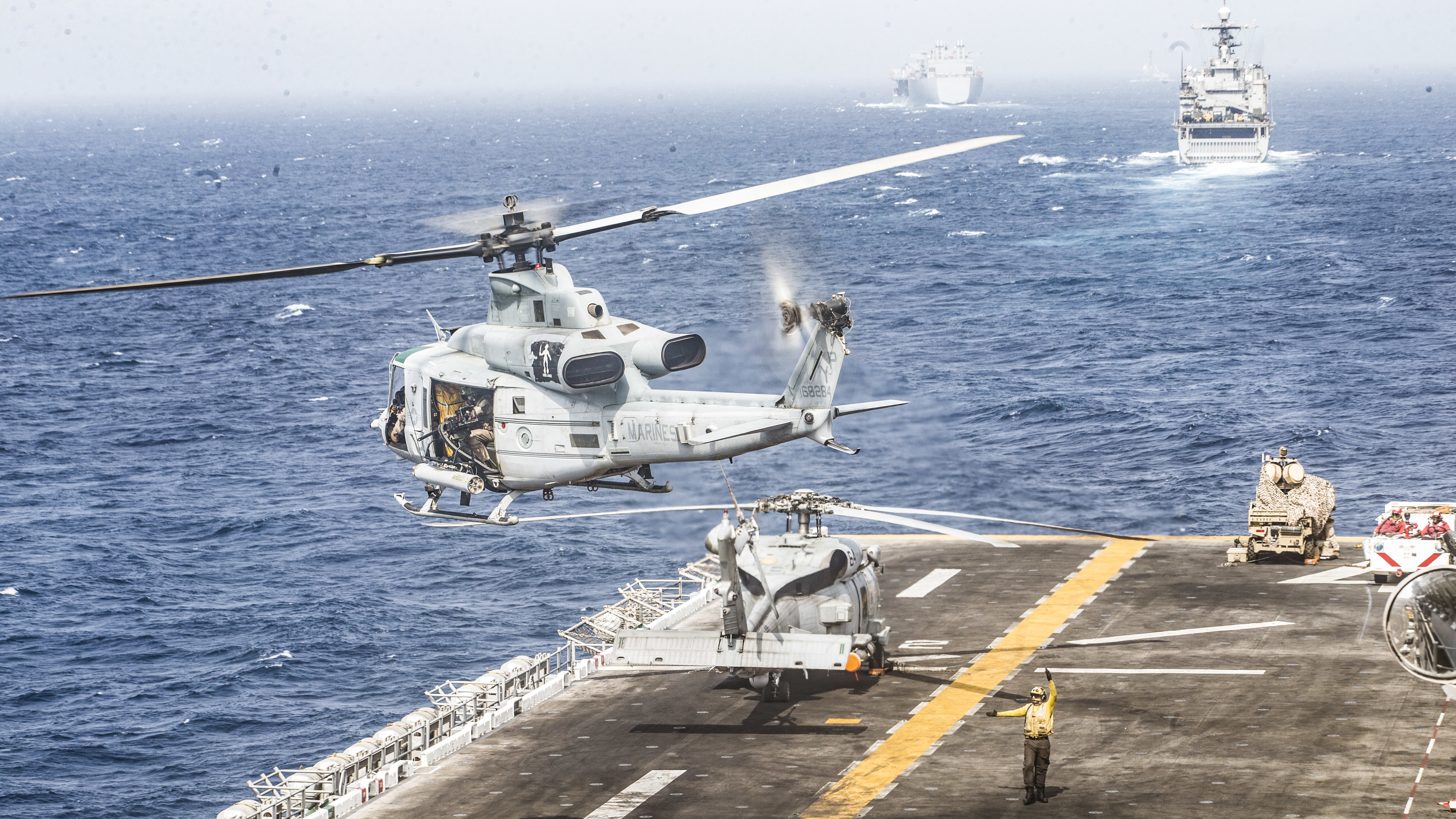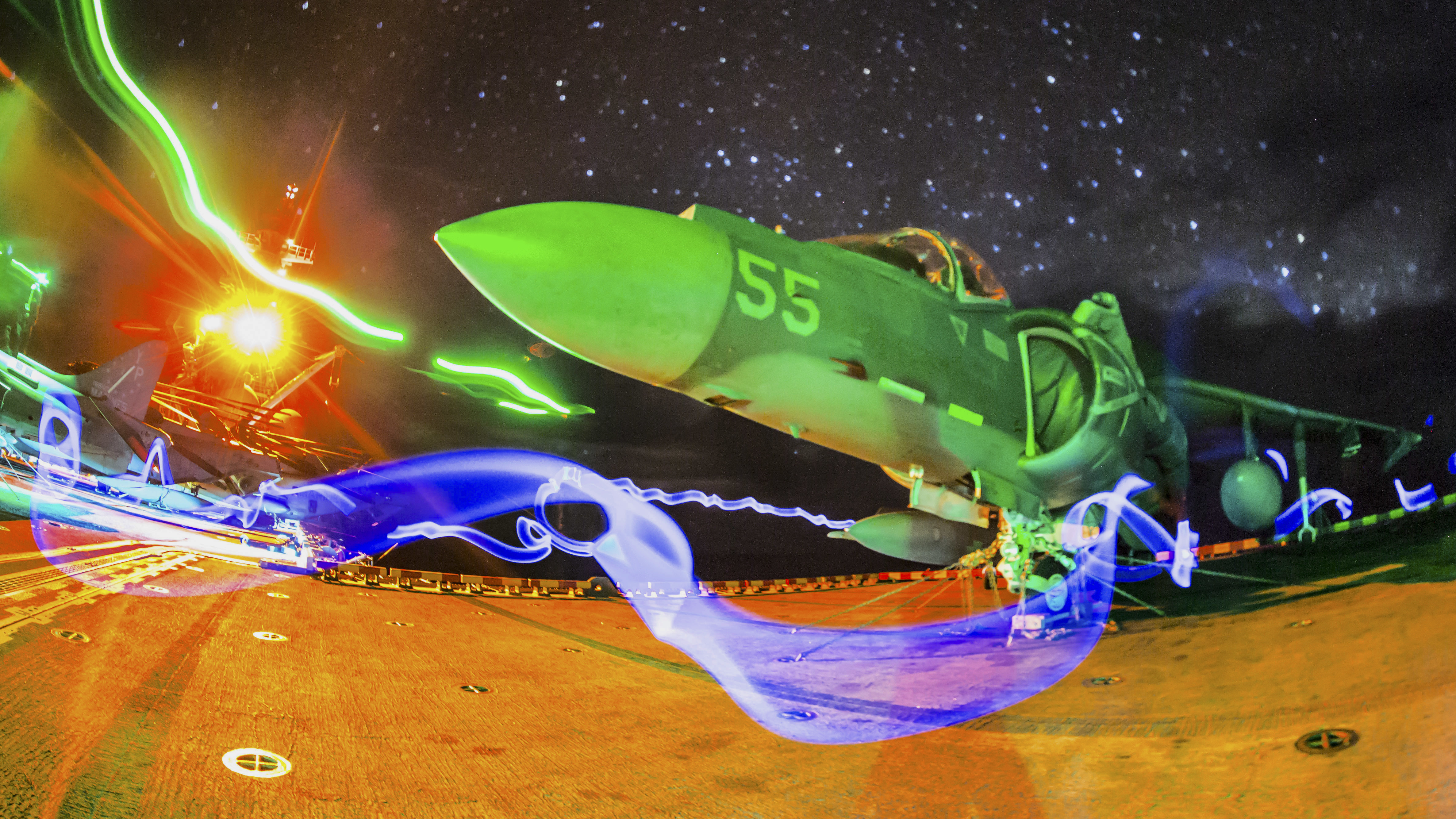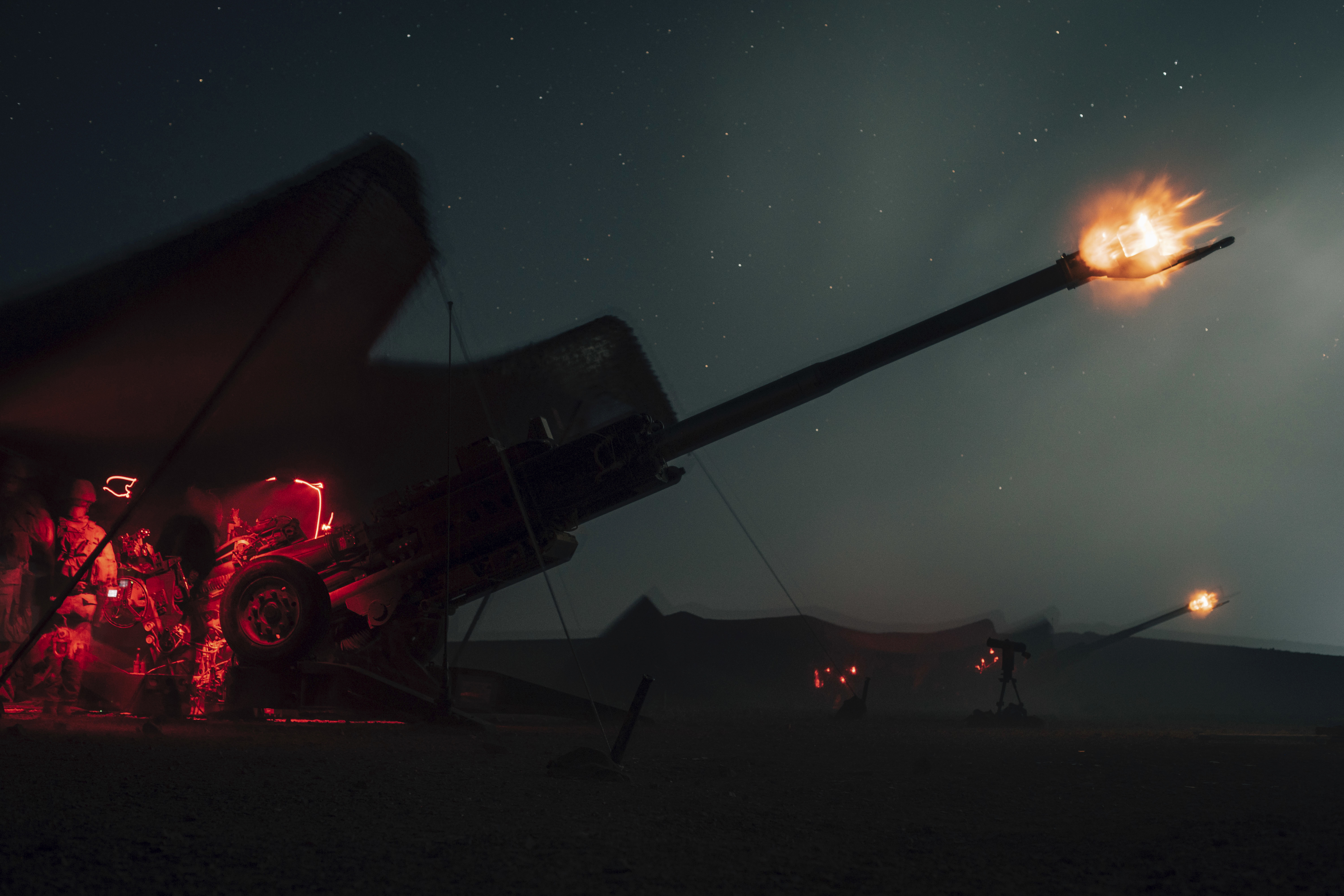
After an eight-month deployment to the Middle East and Indo-Pacific, one thing the 11th Marine Expeditionary Unit won’t offload this week is a platoon of M1A1 Abrams main battle tanks.
That’s because senior leaders opted to forgo taking along four of the beefy, 70-ton armored behemoths as part of the 11th MEU’s ground combat element that deployed with the three-ship Boxer Amphibious Ready Group. The lack of tanks opened up space on the ships, providing more elbow room for shipboard maintenance and repairs of combat and tactical vehicles and equipment in what’s often tightly packed and crowded vehicle and well decks.
“We try to put a lot of combat equipment on the ship. We went out a little bit lighter than the other MEUs,” Col. Fridrik Fridriksson, the 11th MEU commander, told USNI News last week by phone from amphibious assault ship USS Boxer (LHD-4) after the MEU/ARG left Hawaii.
It’s not just about weight or space. “One of the reasons why I wanted to do that is several times I’ve gone out on deployment and vehicles have kind of deteriorated because mechanics and operators can’t get to certain spaces. They can’t open up hoods and do different things, because we’ve put so much stuff in there,” Fridriksson said. “I made a very, very conscious decision to give a little bit of space in between all the vehicles, a little bit of space in between containers, so mechanics can actually open up the hoods and actually work on the engines and people could check tire pressure on the wheels.”
“We staged some of our heavier gear, to include our tanks… in Kuwait and used those when we got there and did not bring tanks with us on this deployment,” he said.
“We really took a hard look at it, because there’s nobody who loves tanks more than I do.”
Tank platoon Marines who operate and maintain the vehicles and guns deployed on ship with 11th MEU. Once the force reached the Persian Gulf, the M1A1 tank crews hit the live-fire range in Kuwait for training and certifications operating Marine Corps tanks that were staged in Kuwait “and they got to do some outstanding training,” Fridriksson said.
The 4,500 Marines and sailors of the Camp Pendleton, Calif.-based 11th MEU and Boxer ARG are returning home this week with San Diego-based Boxer, dock landing ship USS Harpers Ferry (LSD-49) and Amphibious Squadron 5 to wrap up a deployment that began May 1. The Boxer ARG includes the “Blackjacks” of Helicopter Sea Combat Squadron (HSC) 21, Assault Craft Unit 5, Naval Beach Group 1, Beachmaster Unit 1, Fleet Surgical Team 5 and Tactical Air Control Squadron 11.
High-tech showdown

Despite the lack of shipboard M1A1 tanks, the 11th MEU retained sizeable combat capability in its ground fighting forces led by Battalion Landing Team 3rd Battalion, 5th Marines. The BLT took a mix of amphibious assault vehicles, light armored vehicles, trucks and other combat systems, including some newer technologies the Marine Corps is fielding to units. Among those is an electronic warfare jammer put into action in mid-July when a blue-green team aboard Boxer knocked out a couple of Iranian drones that approached the ARG ships sailing through the Strait of Hormuz.
The drone kills made international headlines and drew a presidential tweet.
U.S. Central Command’s boss, Gen. Kenneth McKenzie, visiting Boxer a week after the incidents, told CBS News that one and possibly two drones were “engaged successfully” as the ship crossed the strait into the Persian Gulf. Those incidents came as ARG/MEU aircraft were patrolling the waters as Iranian fast boats sped near the ships, including a replenishment ship.
The anti-drone system reportedly used to down the unmanned aerial vehicles is the LMADIS, or Light Marine Air Defense Integrated System, operated by the MEU’s air combat element. The MEU/ARG spokesman deferred to CENTCOM for any comment on the mission. LMADIS is a mix of electronic jammers, radars and cameras and can be placed on vehicles such as lightweight MRZR all-terrain vehicles to provide a mobile, counter-UAV capability. An 11th MEU photo depicting flight operations as the ship crossed the strait on July 18 showed an MRZR equipped with the LMADIS parked on the forward section of Boxer’s flight deck.
The drone kills showcased the rapid-response capability and combat strength a MEU/ARG gives regional combatant commanders. Navy Capt. Jason Burns, the ARG/MEU commodore, recalled his initial orders when he arrived in the region: “Be the ready-reserve force. Be ready to be on call.”
“I had no additional guidance to do anything other than get out there… and keep training and focus on that to be available” when needed, Burns said by phone from Boxer. He took command of PHIBRON5 from Capt. Brad Arthur during a July 2 ceremony while the ship operated in the Gulf of Aden.
McKenzie, in his visit to Boxer, emphasized the forward presence and rapid-response capabilities the 11th MEU offered, Fridriksson said, and he “just wanted to make sure that whatever was going to go on in the area that we were capable of helping out and being that flexible, adaptive force ready to respond to any type of crisis.”
That ability to respond quickly and effectively to orders and missions like the drone downing is rooted in the MEU/ARG’s predeployment and integrated training, officials said.
“During the workup cycle, as we’re training to deploy, we spend a lot of time running through different scenarios as a Navy-Marine team and integrating our capabilities,” Capt. Dale Heinken, who took command of Boxer on Sept. 15, said by phone from Boxer. “So that when we bring that presence and that rapid-response capability to the combatant commander, we’ve already kind of rehearsed and trained through our preplanned responses and we’re ready to integrate as a team.”
“The Marines bring a capability that we immediately pulled into it, what we really call a layered defense. So as things come close to ship, different systems will be engaged or interact into that approach,” said Heinken, who had served as the ship’s executive officer. “When we come to 5th Fleet, in particular, we’ve already kind of rehearsed those preplanned, those cookie-cutter approaches to doing stuff,” he said, noting, “we’ve already integrated well before we deployed.”
“We bring an incredible capability to reach out on multiple levels, as well as be a ready force for contingency operations, if we have to be,” he added.
Harriers in the fight in Syria

The 11th MEU’s detachment of AV-8B Harrier jets jumped into combat mode when it was called in to support Operation Inherent Resolve with missions in Syria, operating off Boxer.
The aging, short-takeoff and landing jet is slated to be retired, sometime in the next decade, and replaced by the F-35B Lightning II joint strike fighter jet. The advanced, multi-mission F-35B deployed a year ago as part of the 13th MEU and USS Essex ARG deployment that included the first combat strikes in Syria and Afghanistan.
“The F-35… is just an incredible machine,” Fridriksson said. But “the Harrier did some very, very impressive stuff” in U.S. Pacific Command region and “pretty exciting stuff” in CENTCOM.
“It may be a little bit older, but it’s just as lethal,” he added, noting, “They were very, very well utilized during this deployment.”
Burns, a helicopter pilot by training and former Essex skipper, said the Harrier is “still a good airplane. It’s still a solid performer and it operated very well.” The jet operated integrated with other forces and is “still performing at a high level,” he added.
Training with partners across the fleets

The MEU/ARG entered the Persian Gulf with a busy calendar that included training exercises, Theater Security Cooperation work with regional partners and mid-voyage ship maintenance, Burns said. Marines and sailors participated in multilateral exercise Eager Lion, CENTCOM’s largest training exercise and held in Jordan. The MEU/ARG largely remained intact as a three-ship force throughout its deployment in 5th Fleet. “I was very pleased that we were able to keep it together. We operate the best together,” Burns said.
After leaving the dry heat of 5th Fleet, the 11th MEU and Boxer ARG entered the lush tropics of 7th Fleet, splitting off to participate in three TSC exercises: Kamandag in the Philippines and Tiger Strike in Malaysia with Boxer and Murtha and CARAT in Brunei with Harpers Ferry.
“In the span of less than 30 days, the Marines went from… the deserts of Jordan to the jungles of Brunei, the Philippines and Malaysia,” Fridriksson said. “It’s really unique to go out and start working in the jungle again. I think the Marines really had a good time during the jungle training,” he added.
Marines and sailors got to interact with other naval forces, including the aircraft carrier USS Abraham Lincoln (CVN-72) and expeditionary sea base USS Lewis B. Puller (ESB-3). The ARG used the Marines’ MV-22 Osprey tiltrotor aircraft to run parts and people from Bahrain to the Lincoln. Aircrews got to practice landings and work through their communications systems on Puller, which has large flight and hangar decks, and a security force of Marines embarked Puller briefly for some training.
In June, Boxer’s crew – about half on their first shipboard deployment – and embarked Marines met sailors of the French aircraft carrier FS Charles de Gaulle (R-91) and operated with the French ship for three days, Heinken said. The deployment was the first overseas shipboard cruise for about half of Boxer’s crew. “We saw some pretty unique places,” he said, adding, “all in all, I think it was a really good deployment.”





